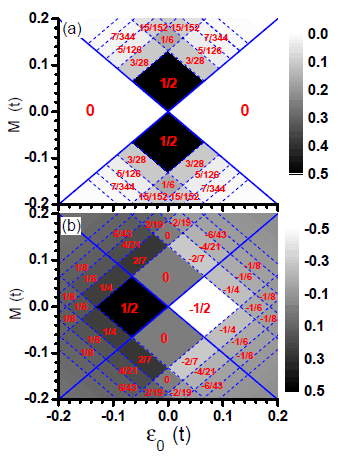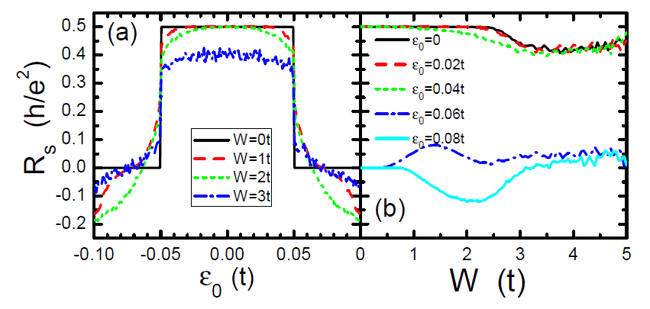In recent years, the topological insulator, a new state of matter, has generated great interest. Comparison of the conventional insulator, the topological insulator has a totally different nature. The topological insulator has the insulating energy gap in the bulk states, but it has the exotic gapless metallic states on its edges or surfaces. In particular, this metallic edge state is protected by the topological order, and it is very robust against various disturbances. Even if the system has some defects, impurities, disorders, dephasings, etc., the edge states can maintain. The quantum Hall effect, which has been found about 30 years ago, is the first class of topological insulator. Recently, some materials with spin-orbit interaction are found to be another class of topological insulator. This topological insulator is caused from the intrinsic spin-orbit interaction combined with the special energy-band structure, and it is prorated by the time-reversal invariance. In the two-dimension topological insulator system, the edge states with opposite spins move along the opposite directions, giving rise to the quantum spin Hall effect.
Recently, Prof.Q.F. Sun and Prof. X.C. Xie in Institute of Physics, Chinese Academy of Sciences, predicted a new kind of topological insulator and quantum spin Hall effect in the ferromagnetic grapheme [Phys. Rev. Lett. 104, 066805(2010)]. Comparing this new quantum spin Hall effect (or topological insulator) with the previous quantum spin Hall effect (or topological insulator), there are following essential differences: (i) The previous quantum spin Hall effect comes from the spin-orbit interaction and the proposed systems all contain the time-reversal symmetry, while the present quantum spin Hall effect exists without the spin-orbit interaction and breaks the time-reversal symmetry. However, this new quantum spin Hall effect is protected by CT invariance (where C and T are the charge conjugation and time-reversal operations, respectively). (ii) In the previous topological insulator, the edge states only carry a spin current while at equilibrium; in present topological insulator, the edge states carry both spin and charge currents at equilibrium and it can have the quantum spin Hall effect and quantum Hall effect. Thus, this is a new kind of topological insulator and quantum spin Hall effect.
Due to that the present system can have the quantum spin Hall effect and quantum Hall effect, both the longitudinal resistance R
14,23 and Hall resistance R
14,26 have the plateau structures. Fig.1 shows the longitudinal and Hall resistance versus the energy ε
0 and the exchange split M, in which the plateaus of the resistances are clearly exhibited. Some plateau values for low filling factors have been labeled in Fig.1. In addition, the spin Hall resistance is investigated and it also shows the plateau structures. In particular, the plateaus of the spin Hall resistance are very robust against the disorder (see Fig.2).
This work was financially supported by NSF-China and China-973 program.
 |
| Fig.1: The longitudinal resistance (in panel (a)) and Hall resistance (in panel (b)) versus the energy ε0and the exchange split M. |
 |
| Fig.2: (a) and (b) show the spin Hall resistance RS versus the energy ε0and the disorder strength W, respectively. |



